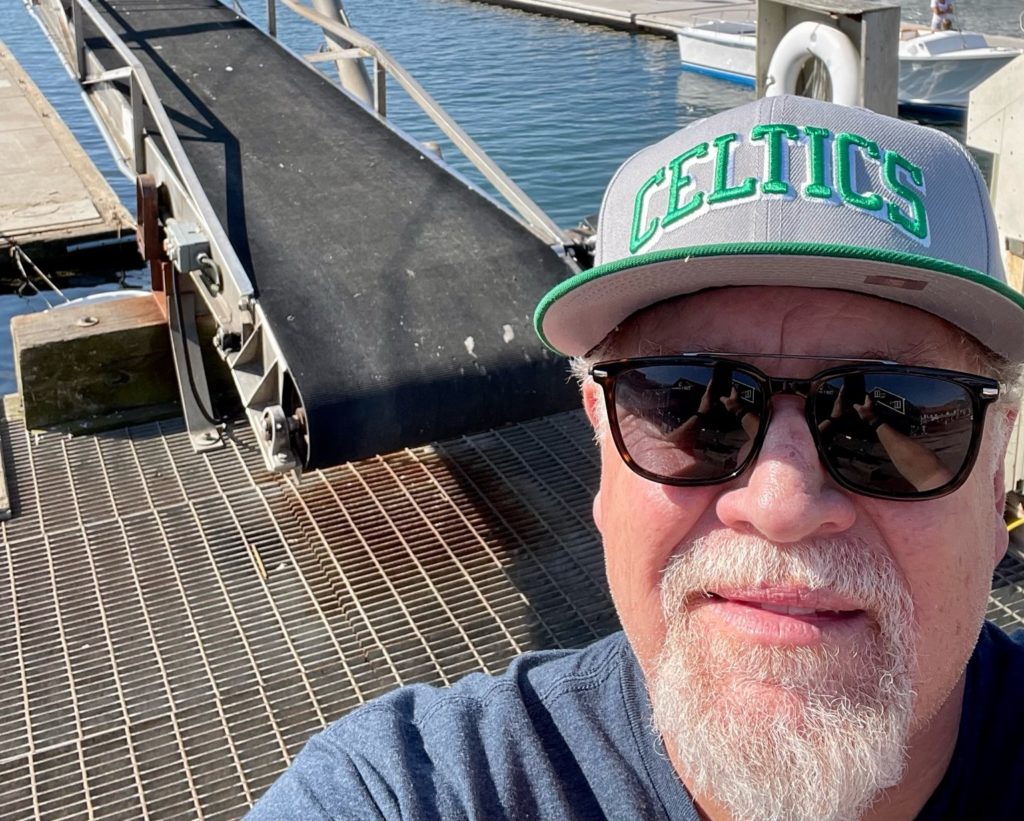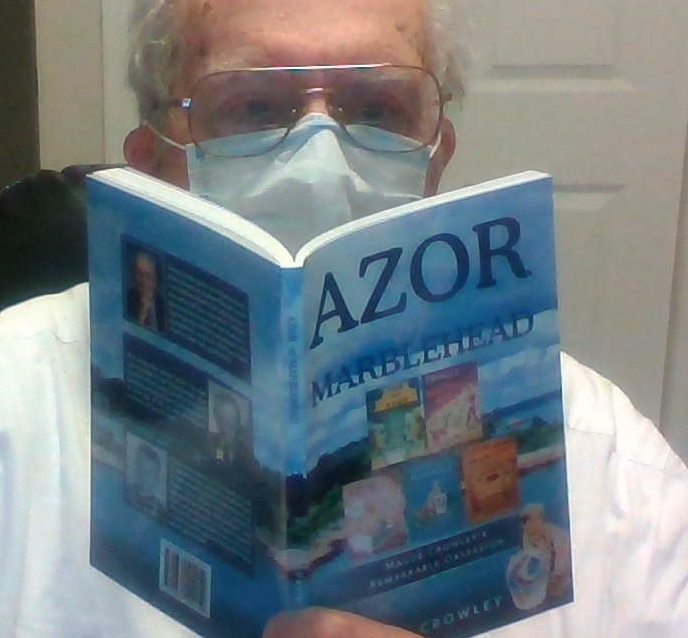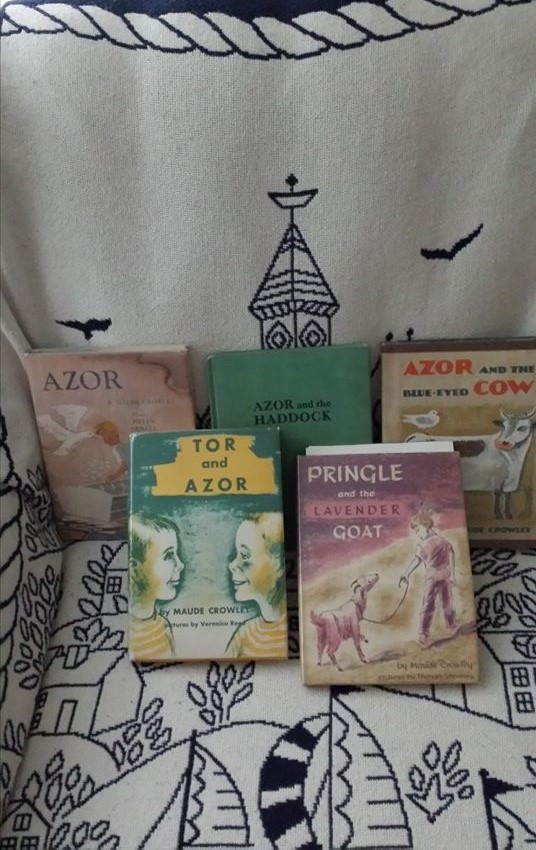Here’s a better shot of Little Harbor thanks to my son Dale Robbins on a visit with us to Marblehead on May 30, 2022


Here’s a better shot of Little Harbor thanks to my son Dale Robbins on a visit with us to Marblehead on May 30, 2022


Contact dave@davidecrowley.com to order at a hefty discount from the original price of $21.95! Now $14.95 including priority shipping
Check out the synopsis to learn more:

Join us on Thursday, July 23rd at 6:30 PM Eastern (5:30 PM Central) (members meeting) followed by a presentation by David Crowley on his recent book. Dave Crowley, son of Maude Crowley, will present a talk on his book Azor of Marblehead the story behind the famed children’s series written by his mother, Maude who sadly passed in 2000 at age 93. The books were published between 1948 and 1960 and were treasured by adults for their warm evocation of unique Marblehead characters, for their humor, and the wit & intelligence of the boy Azor himself. Children read them in Marblehead schools; some producing drawings based on scenes in the books. Meeting is via Zoom and is FREE. Register here: https://form.jotform.com/201883897103158
 How the Town of Marblehead and its people inspired my mother, Maude Crowley, to produce this treasured series that illuminates a child’s life in a time long past. I have the inside story and would be willing to produce a small book that reveals the author’s background and what it took to have the five books published by Oxford University Press. Plus, I have loads of press and radio interviews, high-quality photos, and the original watercolor illustrations by Marblehead artist Ingrid Selmer-Larsen that were intended to go in the series.
How the Town of Marblehead and its people inspired my mother, Maude Crowley, to produce this treasured series that illuminates a child’s life in a time long past. I have the inside story and would be willing to produce a small book that reveals the author’s background and what it took to have the five books published by Oxford University Press. Plus, I have loads of press and radio interviews, high-quality photos, and the original watercolor illustrations by Marblehead artist Ingrid Selmer-Larsen that were intended to go in the series.
“I just treasure them and it took me a long time to get not only mine, but my mother’s, as well, due to the book search and time,” writes Lynne Jastremski DeGrandpre who took this wonderful photo of the five books that my mother published between 1948 and 1960.”
“I grew up in Marblehead in the ’70s. Your mom’s Azor series had a place of honor on my bookshelf, and I enjoyed walking the same streets as Azor and his friends. I now read the books to my girls, who enjoy recreating the same adventures when we go back to M’head each summer,” another Azor fan emailed me.
If you would like a book that gives the origin of the Azor stories and includes the unpublished artwork, I’ll go ahead with the project over the winter and spring. It’ll be available at a reasonable cost. Be sure to add your comments and suggestions to this post, Email me or check it out in the Azor of Marblehead group on Facebook.
Hans R. Jacobsen, my grandfather, was a civil engineer who arrived from Norway in 1902 at age 26, and helped to build New York’s first subway line. When an inaugural train went through in October, 1904 he rode in the first car. He married my grandmother, a Danish immigrant, in 1906 and after other building projects bought a civil engineering business in 1909 in Oyster Bay on the north shore of Long Island. My mother, his first child, was three, and his second daughter, my aunt Therese, was an infant when they moved to Oyster Bay.
The family joined the Christ Episcopal Church where he met Emlen Roosevelt, a New York banker, who owned property bordering Sagamore Hill, the estate of his famous cousin Theodore Roosevelt. Grandfather rebuilt a road on Emlen’s estate and supplied other engineering advice. When Theodore returned in June 1910 from a hunting trip in Africa, the people of Oyster Bay prepared an elaborate welcome which Grandfather described:
…the day he arrived was sunny and the people in a festive mood, as the train from New York came to a stop. The committee and nearly everyone present knew Teddy personally or had seen him many times. He shook hands all around and briskly, with a grin on his face, was escorted to the platform erected for the occasion and began his speech: “Fellow Oysters, large and small….” He related some of his African experiences; then, after shaking more hands, he left for Sagamore Hill, about 3 miles distant.
Sometime later…
An automobile stopped outside our home in Oyster Bay; in it was Colonel Roosevelt, as the former president preferred to be called, Mrs. [Edith] Roosevelt and the youngest sons Archibald and Quentin. My wife was inside at the time, but soon came out on the porch, where she found Mrs. Roosevelt eagerly conversing with our three-year-old daughter. I was not at home but after a few complimentary remarks about our daughter, Mrs. Roosevelt asked my wife if I could arrange to be at Sagamore Hill, at 10 AM the following morning, to discuss with the Colonel the building of a new road to Sagamore Hill.
…He greeting me most affably and mentioned the fact that I had done some engineering work very satisfactorily for his cousin Emlen; then he stated that the present dirt road was not fit for automobile traffic, and new modern road must be built.

Roosevelt in his library at Oyster Bay around the time of the road building project.
Roosevelt took a keen interest in the project and treated Grandfather with great cordiality. He even interrupted an intense political discussion in February, 1912 about his Bull Moose candidacy, to consult with him on the road work.
Any construction project generates friction. Here’s how Grandfather recalled the Colonel’s reaction to problem with the delivery of materials.
We were sitting in his study discussing the delay, and I told him that the stone had been ordered a long time ahead; it was unfortunate, I said, that the weather should interfere and cause delay, a matter that was beyond our control. However, I was not able to pacify the Colonel as easily as that. He thought differently: “If a man in my regiment in Cuba had accidentally shot another soldier and advance the excuse, [that] he did not know the rifle was loaded, we would have had the man court-martialed!” The Colonel’s anger did not last long. He followed me to the door; we shook hands as usual, and I departed. Mrs. Roosevelt who was admired by all and whom I often met, and spoke with, had heard of my little encounter with the Colonel; and she apologized to me later and regretted what her husband had said. I told her I did not mind at all.
The road was finished by the time my grandfather left Oyster Bay in June 1913 to return to New York for more subway construction, but not before he and Roosevelt became better acquainted through several tours of Sagamore Hill and long walks on the roads in the vicinity of their homes. In 1915 and 1918, Roosevelt wrote appreciative letters to Grandfather thanking him for the road and for inquiries about his health. In the 1918 letter he sent his love to my mother. In 1912 when he completed the road, my grandfather was thirty-six, Roosevelt was fifty-four, and my mother was five.
Grandfather followed the remainder of Roosevelt’s career in the newspapers and saved the issue when the former president died on January 6, 1919. I have them in front of me, along with the two letters, as I write.
Next week: Dave flunks out of college.